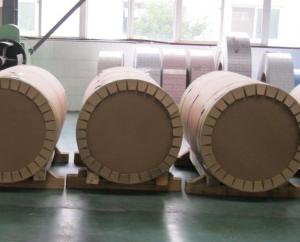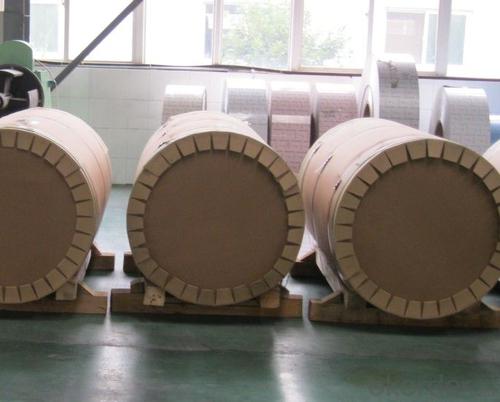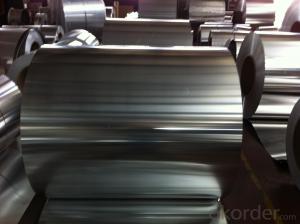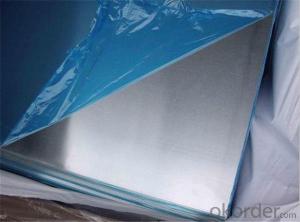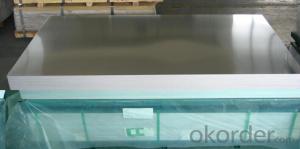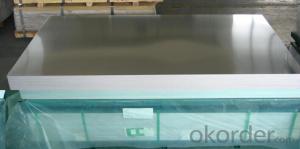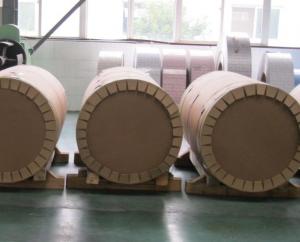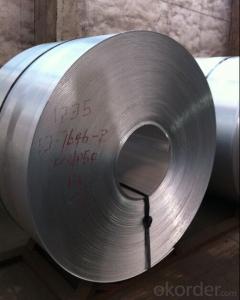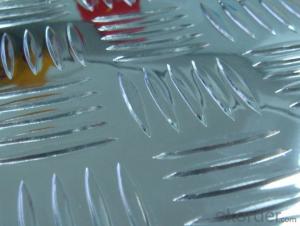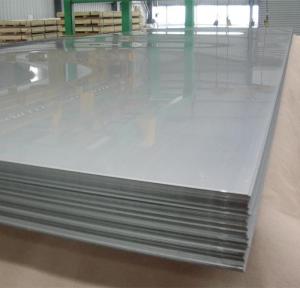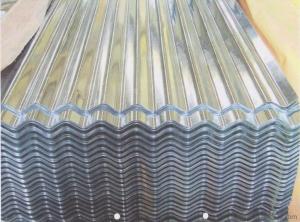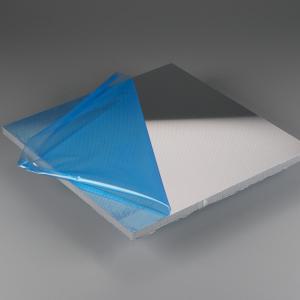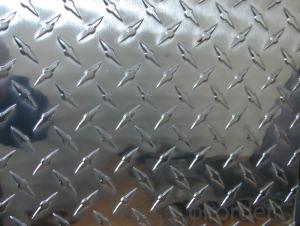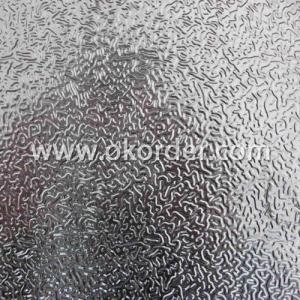Anodized Aluminum Flat Sheets Texas - Aluminum Hot Rolled Sheet and Plate with Best Price
- Loading Port:
- Shanghai
- Payment Terms:
- TT OR LC
- Min Order Qty:
- 1 m.t.
- Supply Capability:
- 300 m.t./month
OKorder Service Pledge
OKorder Financial Service
You Might Also Like
Specification
1.Structure of Product Description
hot rolled and cold drawn aluminum plate are both widely used in the field of construction field and decoration field, etc.
There are many different grades, such as: 1000 series, 2000 series, 3000 series, 5000 series, 6000 series, etc.The detailed grade are as follows: 1010, 1050,1060,1100, 2024, 3003, 3005, 3105,8011, etc. The temper is include H14, H22, H24, H44,O, H114,etc.
2. Main features of the product
a.Competitive price
b.Frist-Class Service.
3. Image.
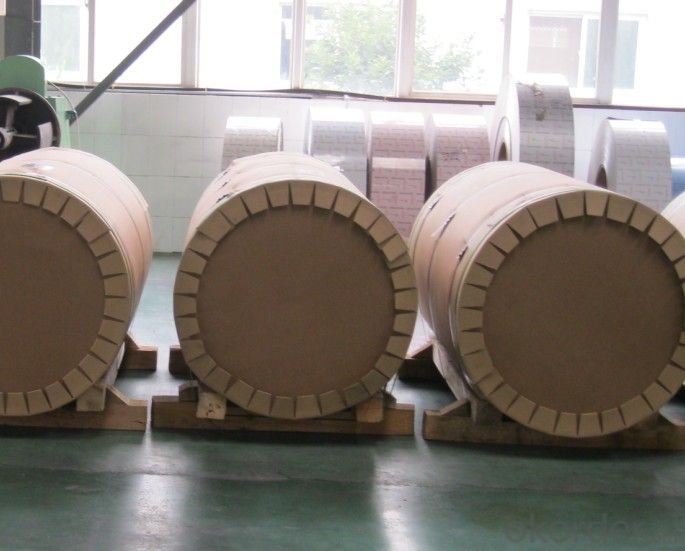
4. Product detailed sizes:
1000mm*2000mm,1219mm*2438mm, 1220mm*2440mm,etc.
5. FAQ:
What is the quality standard?
---Usually our standard is GB3880-2006 or others.
What is the width range?
---It is from 1000mm to 2500mm, etc.
What is the length range:
---It is from 2000mm to 6000mm, etc.
---Normally it is around 5 tons/each size.
Where is your client from?
---Normally it is from Japan, USA, Canada,Turkey, FIJI, etc.
What is your mainly products?
---Normally they are aluminum sheet, checkered sheet, mirror finish aluminium sheet, aluminum casting coil, etc.
- Q: Can aluminum sheets be used for furniture manufacturing?
- Certainly! Furniture manufacturing can make use of aluminum sheets. Aluminum is a highly versatile material that possesses several advantageous properties, making it suitable for the production of furniture. Lightweight, durable, and corrosion-resistant, aluminum can be easily shaped into various sizes and forms. Additionally, aluminum has a sleek and modern appearance, making it a popular choice for contemporary furniture designs. Frames, legs, and other structural components for chairs, tables, shelves, and cabinets can be fashioned from aluminum sheets. The versatility and durability of aluminum make it a viable option for furniture manufacturing, particularly for outdoor or industrial furniture that requires resistance to harsh weather conditions or heavy use.
- Q: How do you join aluminum sheets together?
- One common method to join aluminum sheets together is through welding. This involves melting the aluminum at the joint and then allowing it to solidify, creating a strong bond. Other methods include using adhesive bonding, riveting, or using mechanical fasteners such as screws or bolts. The choice of joining method depends on factors such as the application, the thickness of the aluminum sheets, and the desired strength and appearance of the joint.
- Q: How much is the price of the 6061 aluminum plate?
- Therefore, according to your specifications, quantity and use in what place (that is, quality requirements) in order to quote.Or give you a reference priceMore than 8MM thickness of the domestic low-end (that is, the surface black, flatness is not how kind of) price of 20 yuan /KG or soMade in China at the end of the price of 25-30 yuan /KG, domestic high-end 30 yuan /KG or more.Imports are usually 40-80/KGThe thickness below 8MM is quoted according to the actual thickness
- Q: Dear all, i'm having crack problem with bending aluminium sheet metal, anyone know than which type(Model) of aluminium sheet metal is suitable for bending, Thanks.
- THERE WERE MANY TYPES OF ALUMINUM ACCORDING TO ITS RIGIDITY. Please refer to RS Industrial catalogue for your data references.
- Q: How much is a square inch of a millimeter aluminum plate?
- Make a supplement to the answer on the first floorSo-called:1 lines, when referring to pure aluminum, that is, aluminum content is not less than 99%., weight 2.71 kg / square meterThe 3 Series refers to manganese as the main alloying element, that is, aluminum manganese alloy.
- Q: This question asks about the impact of aluminum sheets on the air quality inside a building.
- <p>Aluminum sheets themselves do not directly affect indoor air quality. They are inert materials that do not emit volatile organic compounds (VOCs) or other harmful substances. However, the installation process might involve adhesives or sealants that could release VOCs temporarily. Proper ventilation during and after installation can mitigate this issue. Additionally, aluminum sheets can contribute to better air quality by enhancing thermal performance, reducing energy consumption for heating and cooling, and indirectly lowering emissions from power plants.</p>
- Q: Can aluminum sheets be embossed?
- Yes, aluminum sheets can be embossed.
- Q: What is the density of the 1100 aluminum plate?
- 1100 aluminum density is fand 2.7g/cm.1100 for industrial pure aluminum, aluminum content (mass fraction) of 99%, can not be enhanced by heat treatment. With high corrosion resistance, electrical conductivity and thermal conductivity, and its small density, good plasticity, through pressure processing can produce all kinds of aluminum, but the strength is low.
- Q: Can 101 aluminum sheets be used in food storage containers?
- Yes, 101 aluminum sheets can be used in food storage containers.
- Q: What specific tools or equipment are necessary for working with aluminum sheets?
- <p>Working with aluminum sheets typically requires a few specialized tools and equipment. These include a metal cutting saw for precise cuts, a metal file or sandpaper for smoothing edges, a metal shear for cutting, and a drill with metal bits for making holes. A roller or bending brake is useful for shaping the sheets, and a T-square or straight edge is important for marking straight lines. Safety equipment such as gloves, goggles, and a dust mask are also essential to protect against sharp edges and metal dust.</p>
Send your message to us
Anodized Aluminum Flat Sheets Texas - Aluminum Hot Rolled Sheet and Plate with Best Price
- Loading Port:
- Shanghai
- Payment Terms:
- TT OR LC
- Min Order Qty:
- 1 m.t.
- Supply Capability:
- 300 m.t./month
OKorder Service Pledge
OKorder Financial Service
Similar products
Hot products
Hot Searches
Related keywords
